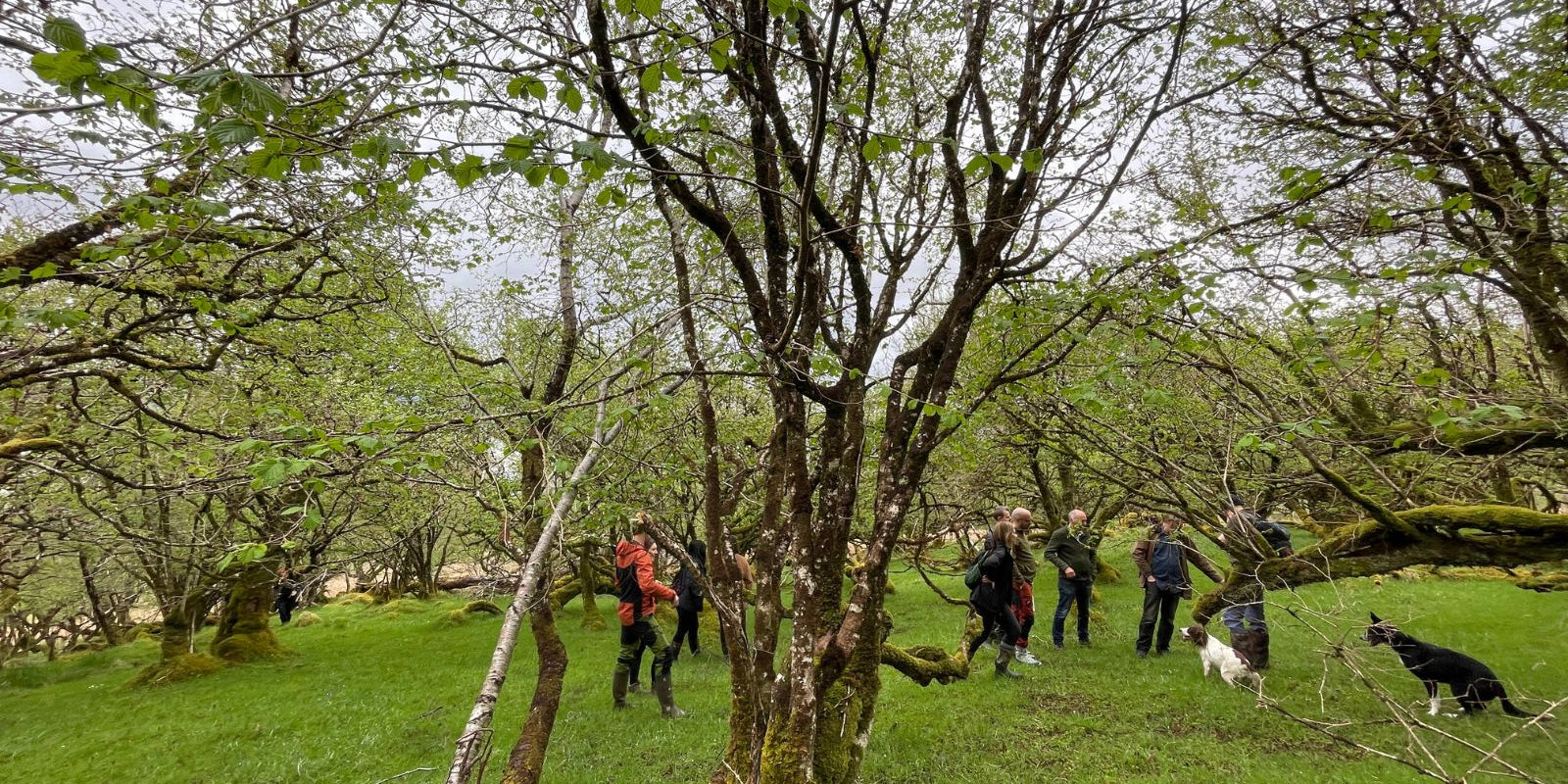Here at The Future Forest Company, we are working hard to protect Scotland’s rainforest. World Rainforest Day was founded in 2017 to celebrate the importance of healthy rainforests for climate, nature and communities. It brings together people from all around the globe to protect and restore these precious habitats. At our Glenaros site, we have significant areas of rainforest containing the very special Atlantic Hazelwood.
Rainforests in Scotland
Scotland’s rainforest, also known as Atlantic woodland or Celtic rainforest, is incredibly rare, yet just as important as tropical rainforest. In the hyper-oceanic zone along parts of the west coast of Scotland, high levels of rainfall, relatively mild temperatures and clean air combine to provide the perfect conditions for mosses, liverworts and lichens to grow. These climatic conditions exist on less than 1% of our planet, creating this remarkable but endangered habitat.
An amazingly diverse array of rare bryophytes and lichens can be found here: on trees, boulders and on the ground. Not only do they give the rainforest a unique and slightly magical feel, but their scarcity makes Scotland’s rainforest a habitat of international importance.

How much of Scotland's rainforest is left?
It is estimated that as little as 30,000 hectares might remain of Scotland’s rainforest. Although there are approximately 93,000 hectares of semi-natural woodland in Scotland’s rainforest zone, less than one-third of this woodland contains this rare rainforest biodiversity.
What are the threats to Scotland’s rainforest?
There are two highly significant threats to Scotland’s rainforest. The first is overgrazing, mainly by deer, which is affecting the long-term survival of 40% of rainforest sites. The second is invasive non-native species, primarily rhododendron ponticum. Introduced in the 1700s as ornamental plant, this dense shrub dominates woodland habitats and shades out rare native plants, resulting in significant nature loss.

Further threats include the planting of exotic conifers on ancient woodland sites; pests and diseases including the devastating ash dieback; and air pollution, specifically nitrogen deposition, which can devastate the highly sensitive lichens and bryophytes.
The hyper-oceanic zoneis predicted to shrink due to climate change, which will leave the remaining Scottish rainforest smaller, more fragmented and isolated than ever.
Why do we need to save Scotland’s rainforest?
Saving Scotland’s rainforests is vital for combatting both the climate emergency and the nature crisis. This irreplaceable habitat locks away carbon, as well as preventing flooding and soil erosion. It also provides a vital home for an array of globally significant species, some of which are unique to Scottish rainforest.

What are we doing?
Here at The Future Forest Company, we are lucky enough to have significant areas of Atlantic Hazelwood at our Glenaros site on Mull. We have just started to manage these places and monitor their condition. We have identified that all our hazelwoods have been subject to overgrazing, resulting in little new regeneration, and they need help if future generations are to experience and enjoy them. We have also started a survey on lichens within the old Atlantic Hazelwood as the woodland could be of international importance for this often overlooked but important group of ‘lower plants’, we are removing invasive species such as Rhododendron to help the rainforest to thrive.
To help do this work, we have our own in-house ecologist, and forestry specialists who manage these areas and are currently carrying out site surveys and planning, to ensure we do things right. All our work will involve regular monitoring to judge whether our approaches are successful or not. This will include monitoring of key species such as the rare lichens and fungi.
What can you do?
Subscribe today to help conserve and restore Scotland’s rainforest and ancient woodlands. By choosing our nature sponsorship, you’ll be helping to heal the planet, conserving and restoring some of our rarest habitat and its wildlife, benefitting future generations who may not otherwise experience these special places and helping to conserve these vital ecosystems.
